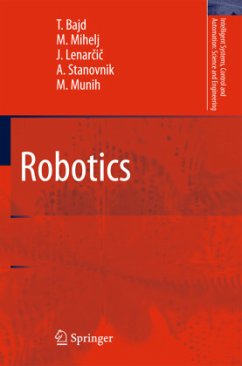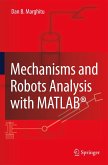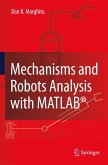This introductory text treats the following subjects: the basic characteristics of industrial robot mechanisms; the pose and movement of an object, which are described by homogenous transformation matrices; a geometric model of robot mechanism; a short introduction into kinematics and dynamics of robots; robot sensors and the planning of robot trajectories; basic control schemes resulting in either desired end-effector trajectory or force; robot grippers and feeding devices, which are described together with the basics of robot vision; the planning of robot assembly; and finally, robot standards and safety are briefly dealt with. The book concludes with a glossary in English, French and German.
This volume is supplementary reading for courses in robotics or industrial robotics and requires minimal knowledge of physics and mathematics.
This volume is supplementary reading for courses in robotics or industrial robotics and requires minimal knowledge of physics and mathematics.
From the reviews:
"This simply titled work is a result of carefully delivered lectures ... for multiple classes of undergraduate engineering students over more than a decade. This exemplary course resource can serve as a basis for the study of robotics. Pedagogically well structured, it covers the fundamentals of industrial robotics ... . this book is a concise, readable reference source for those getting their feet wet in the field. ... Summing Up: Highly recommended. Lower- and upper-division undergraduates, two-year technical program students, and general readers." (G. Trajkovski, Choice, Vol. 47 (11), July, 2010)
"This simply titled work is a result of carefully delivered lectures ... for multiple classes of undergraduate engineering students over more than a decade. This exemplary course resource can serve as a basis for the study of robotics. Pedagogically well structured, it covers the fundamentals of industrial robotics ... . this book is a concise, readable reference source for those getting their feet wet in the field. ... Summing Up: Highly recommended. Lower- and upper-division undergraduates, two-year technical program students, and general readers." (G. Trajkovski, Choice, Vol. 47 (11), July, 2010)








